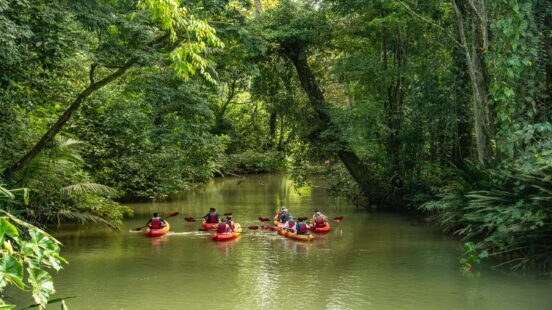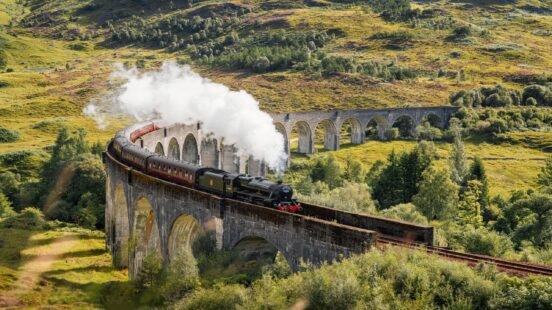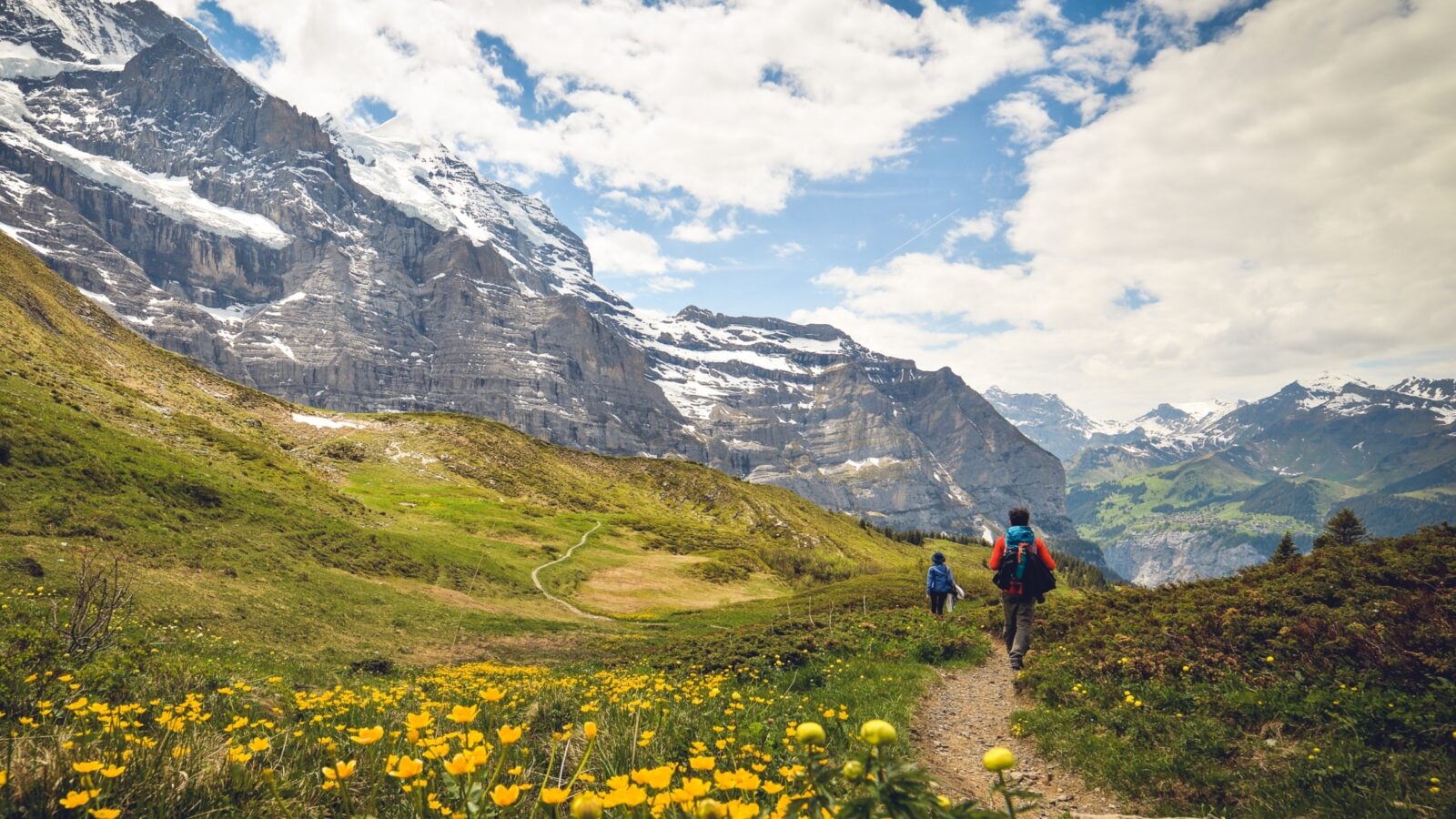The term ‘slow travel’ has emerged as a reminder to savour the journey as much as the destination. But what does it really mean and what are its origins?
Slow travel is a deliberate departure from the rush culture of modern tourism. By putting aside our obsession for convenience, slow travel encourages us to immerse ourselves in the local culture, connect with communities, and appreciate the subtleties of different landscapes.
By embracing a leisurely pace and immersing ourselves in the local culture, we can forge genuine connections with the people, landscapes, and traditions of a destination. This unhurried approach allows for a deeper understanding of the nuances that make each place special, fostering cultural appreciation and empathy. In essence, slow travel allows us to step off the fast-paced treadmill of modern life and embrace a more intentional and mindful way of exploring the world.
The slow movement finds its roots in Italy. It began with the ‘Slow Food’ movement, which was founded by Carlo Petrini in 1986. The initial focus of slow food was on promoting local, traditional, and sustainable food practices in contrast to the rise of fast food and globalised food production. From there, the international move expanded beyond food and gave rise to other ‘slow’ movements, such as slow cities, slow travel, and slow living.
These movements share a common philosophy that emphasises a slower, more mindful, and meaningful approach to various aspects of life. They encourage people to savour experiences, appreciate local culture, and prioritise quality over quantity.
Why Choose Slow Travel?
Slow travel is not only a way to explore the world but also one that fosters meaningful connections with people and places. By eschewing the hurried pace of conventional tourism, we are able to minimise our footprint and lessen the strain on local resources.
This intentional mode of travel often leads to a deeper understanding and respect for local cultures and environments. Travellers engaged in slow travel are more likely to have a positive impact by supporting small businesses, artisanal crafts, and sustainable practices, thereby contributing to the economic well-being of communities.
How to travel slower?
To embrace this approach, start by choosing a limited number of destinations for a more in-depth experience. Extending your stay in each location allows you to take time for a genuine connection with the local culture. This not only enhances your travel experience but also contributes positively to the communities you visit.
Selecting the appropriate mode of transportation is pivotal in cultivating the essence of slow travel, with each choice influencing the overall experience. Opting for train travel over more expedited means, such as planes, inherently aligns with the unhurried ethos.
Once at the destination, slowing down your pace by exploring destinations on foot or by bicycle also allows you to notice the small details that are often missed when travelling at high speeds. But most importantly, it minimises your negative impact on the planet.
Get in touch to start building your slow travel adventure
The Best Destinations for Slow Travel
Some destinations lend themselves more naturally to the art of slow travel, inviting exploration at a leisurely pace. Here are some of our favourite places for slow travel:
1. Sri Lanka
Sri Lanka and slow travel go together like spicy lentil parippu and rice. Just southeast of India, the ‘pearl of the Indian Ocean’ unfolds a collection of wonders, its landscapes peppered with temples, tropical rainforests and tea plantations. Kandy is the country’s cultural hub and ancient capital of the last Sinhalese kingdom. Reach the city by train from Colombo, a 3 to 4-hour chug through misty hills, passing by verdant paddy fields and swaying palm trees.

The adventure doesn’t end here; extend the journey from Kandy to Badulla on a day-long ride along the Main Line. Traverse lush green tea country and rugged valleys, soaking in the breathtaking scenery that only slow travel can unveil.

2. Costa Rica
For Costa Ricans, pura vida is a concept that means ‘pure life’ – finding joy in each day regardless of circumstances, and prioritising what truly matters. It’s a greeting and a goodbye, and it’s at the heart of life here in Central America. With over 98% of its energy being derived from renewable sources, Costa Rica does not only showcase an impressive commitment to environmental responsibility but also seamlessly aligns with the principles of slow travel.

On a private nature tour, slow down on the remote Oso Peninsula to spot jaguars, pumas and pelicans, try ocean kayaking, horseback riding or surfing, there are ample opportunities to embrace the essence of pura vida. In Manuel Antonio National Park, you can set off on an exclusive guide hike, led by local experts. They’ll assist you in observing sloths and hummingbirds in their natural habitat.

3. Switzerland
Switzerland’s landscape undergoes a mesmerising transformation throughout the year, offering a visual symphony of changing seasons. Travelling by train in the winter months, you follow snow-covered paths that wind through the Alps. As spring emerges, hiking trails lead through meadows adorned with Alpine wildflowers.

Summer unveils lush green landscapes, with trails dotted with hidden lakes. Autumn, with its golden hues, invites exploration along trails bordered by forests ablaze with the colours of fall. Traversing Switzerland on foot allows for an intimate connection with nature and is a quintessential way to experience the joys of slow travel.

4. Scotland
Leaving behind the cobble streets of Edinburgh, winding tracks lead you through the Scottish Highlands, revealing breathtaking vistas of rugged mountains, serene lochs, and ancient castles. Immerse yourself in the lap of luxury on the Royal Scotsman, considered one of the most opulent train journeys in the world.

Immerse yourself in the lap of luxury on the Royal Scotsman, considered one of the most opulent train journeys in the world. With its fine dining car, round-the-clock steward service, and an intimate setting limited to 40 guests, the experience is tailored for those seeking a truly refined and exclusive adventure.

5. New Zealand
New Zealand’s roads ribbon through the north and south islands, taking in geothermal wonderlands, ice fields, glaciers, beaches and steep-sided fiords. These scenic landscapes are perfect for slow exploration on foot and you can embark on a ‘Great Walk’ of the Tongariro Crossing, or a heli-hike in the Southern Alps from Mount Cook.

Wine tours too, are ideal for those with a slow travel mindset, and sampling award-winning wine in the vineyards of Hawke’s Bay is a must. And when you’re ready to rest, New Zealand has some of the world’s most luxurious remote Lodges – we love Solitaire Lodge on the shores of Lake Tarawera.

6. Laos
The Mekong River flows through the mountains of northern Laos to the gently rolling hills and plains of the south. In the heart of the mountainous region the Mekong has formed a peninsula where Luang Prabang, one of the oldest cities in Laos, has stood for more than 1,000 years. Here, where the architecture is a rich tradition of ancient Lao Buddhist temples and French colonial buildings, time stands still.

Rise before dawn to witness a remarkable sight: slews of barefoot monks emerging from temple gates in a solemn procession known as Tak Bat (or Sai Bat). Every morning, they wind their way through the historic town centre, a UNESCO World Heritage Site since 1995. Lay down your head at Rosewood Luang Prabang, a jungle-backed luxury resort nestled close to a waterfall (exclusive river cruises, complimentary bikes and a spa, are just a few of their tailor-made services).

Our Team's Favourite Trips
Where to Stay
Whatever you're looking for from your slow travel adventure, our travel designers are ready to help.









